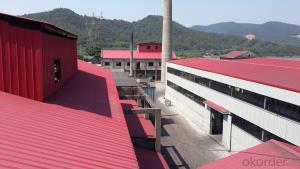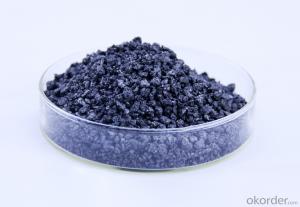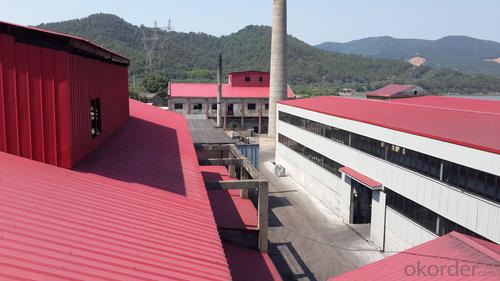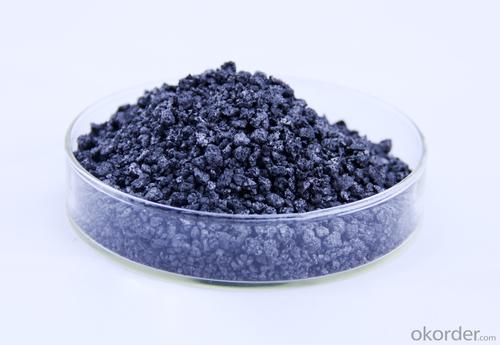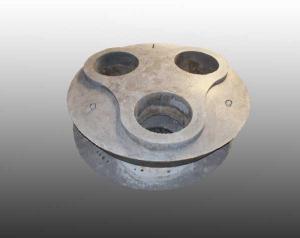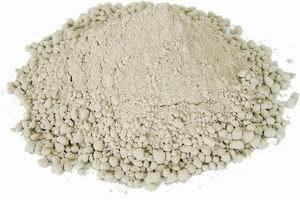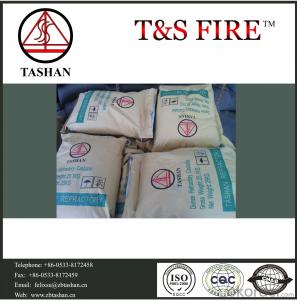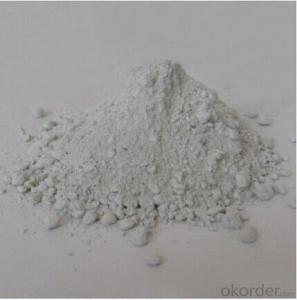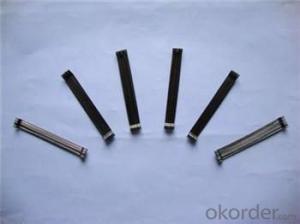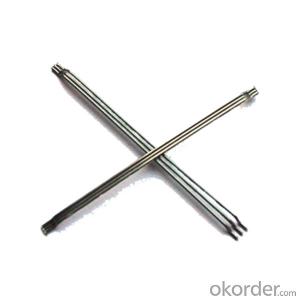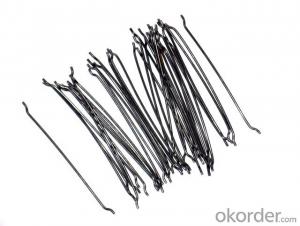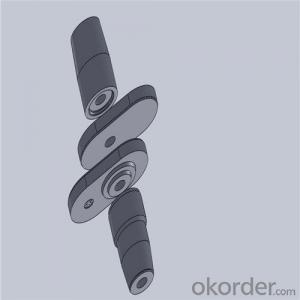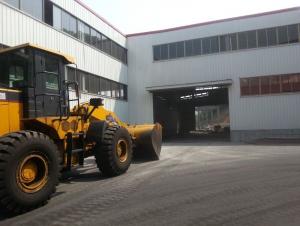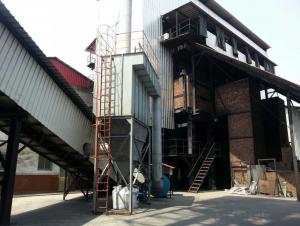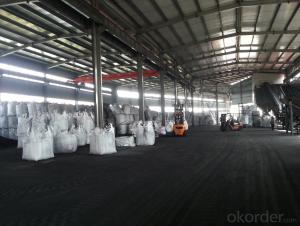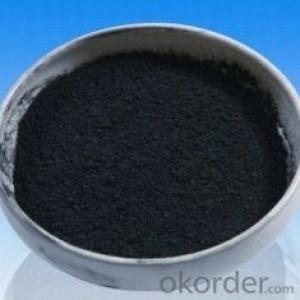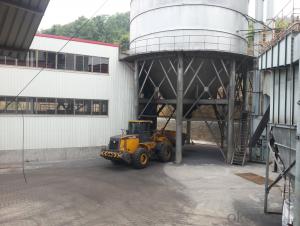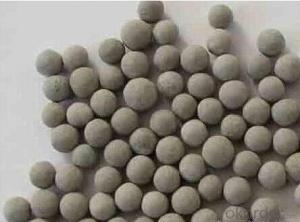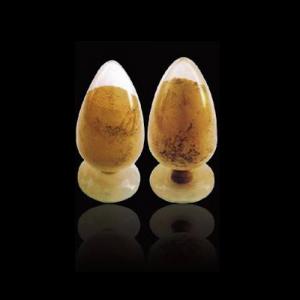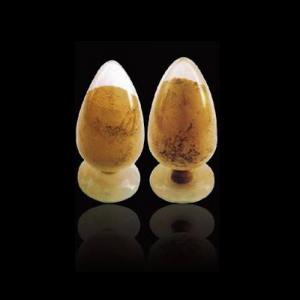Monolithic Refractories for Iron and Steel Industry - Calcined Petroleum Coke Supply with Large Quantity
- Loading Port:
- Shekou
- Payment Terms:
- TT OR LC
- Min Order Qty:
- 20 m.t
- Supply Capability:
- 1000 m.t/month
OKorder Service Pledge
OKorder Financial Service
You Might Also Like
Factory Background
The factory is majorly running and operating carbon additive (pitch coke, calcined petroleum coke and anthracite), low nitrogen carbon additive, and brake pad making material. Company is the long term supplier of Sinosteel Corporation, Shanghai Carbon Corporation, the plant of SGL Group the Carbon Company in China and some largest special carbon products producing plants.
YUAI also supplies huge amout of high quality carbon additive and graphite carbon additive to steel plants, foundries and ferrotungsten plants. YUAI has been assigned by BAO STEEL as the only organization for processing pitch coke for export purpose. The group’s major products are constantly exported to Japan, Korea, Malaysia, South East Asia countries, Europe and America, which receive praises by our consumers.
The group has invested numbers of calcinators in Anhui China to ensure the capability of producing and processing huge amount of carbon additive. Further investment is on process. According to the orders from customers, YUAI is able to processing and providing different specifications of carbon additive and other products. To provide best quality of products and to offer customers most satisfied service is YUAI’s operating objectives.
Calcined Petroleum Coke
FC:98.5%min,
S:0.5%max
A:0.8%max
V:0.7%max
Mositure:0.5%max
Size:1-5mm
This product is mainly used in steel-making and foundry. Calcined Petroleum Coke
Calcined Petroleum Coke comes from delayed coke which extracted from oil refinery. Although Calcined Petroleum Coke contains a little bit higher level of sulfur and nitrogen than pitch coke, the price advantage still makes it widely used during steel-making and founding as a kind of carbon additive/carburant.
Packaging & Delivery
Packaging Detail:25kg paper bag into 1t weaving bag 5kg, 10kg and 20kg weaving bag into 1t weaving bag 25kg weaving bag put on pallet covered with entanglement wrap product direct into packing bag 25kg paper bag put on pallet covered with entanglement Wrap 25kg weaving bag into 1t weaving bag.
Delivery Details: 7 days
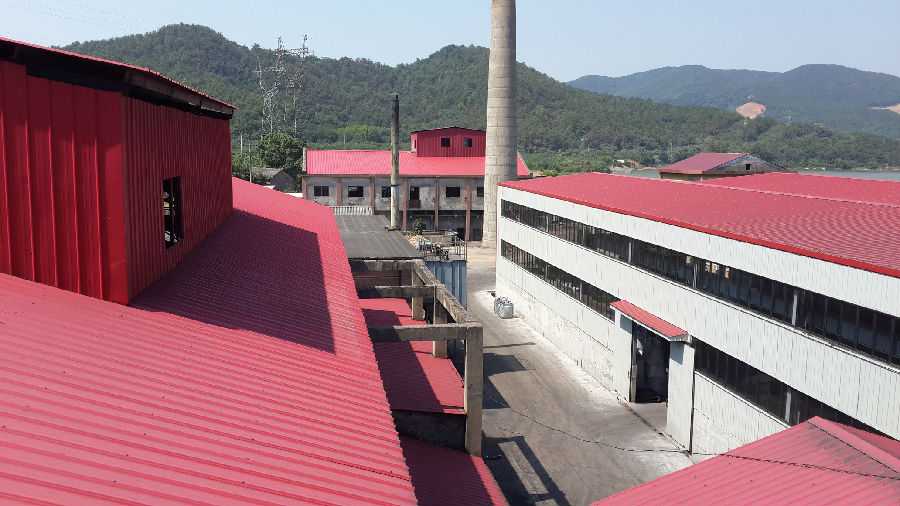
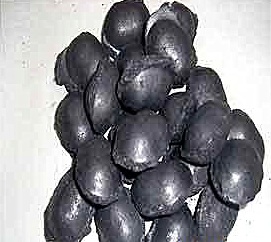
- Q: What are the common failure mechanisms of monolithic refractories in the iron and steel industry?
- Common failure mechanisms of monolithic refractories in the iron and steel industry include: 1. Thermal spalling: Monolithic refractories are exposed to extreme temperature changes during the iron and steel production process. These rapid temperature fluctuations can cause the refractory material to expand and contract, leading to thermal stress and ultimately spalling. This failure mechanism is particularly common in areas where the refractory is exposed to high temperatures, such as in the hot face of a furnace. 2. Chemical attack: The iron and steel production process involves the use of various chemicals and molten metal, which can react with the refractory material over time. Chemical attack can cause the refractory to deteriorate, leading to cracks, erosion, and ultimately failure. Common culprits include slag, alkalis, sulfur, and other impurities present in the production environment. 3. Abrasion: The movement of materials, such as iron ore, coke, and fluxes, can cause abrasion on the refractory lining. This mechanical wear and tear can weaken the refractory material, leading to its failure. Abrasion is particularly prevalent in areas that experience high material flow rates or turbulence, such as in the taphole or launder systems. 4. Corrosion: Monolithic refractories can be subjected to corrosion from the gases, liquids, and solids present in the iron and steel production environment. Corrosion can occur due to the presence of oxygen, water vapor, and various chemical species, such as carbon monoxide and sulfur compounds. It can lead to the formation of corrosive products, such as oxides or sulfides, which degrade the refractory material over time. 5. Mechanical stress: Monolithic refractories may experience mechanical stress due to factors like thermal expansion and contraction, vibration, or mechanical impact. Excessive mechanical stress can cause cracks or fractures in the refractory lining, compromising its integrity and leading to failure. To mitigate these failure mechanisms, proper selection of refractory materials, regular inspection, and maintenance are crucial. Additionally, designing refractory linings considering the specific operational conditions and using appropriate installation techniques can help enhance their performance and lifespan in the iron and steel industry.
- Q: How can the lifespan of monolithic refractories be extended?
- The lifespan of monolithic refractories can be extended through various measures, including proper installation, regular maintenance, and implementing effective operating practices. Firstly, it is crucial to ensure proper installation of monolithic refractories. This involves following the manufacturer's guidelines, using appropriate equipment and techniques, and ensuring correct curing and drying processes. When installed correctly, monolithic refractories are better equipped to withstand thermal stresses and chemical attacks, thereby prolonging their lifespan. Regular maintenance plays a key role in extending the lifespan of monolithic refractories. This includes routine inspections to identify any signs of wear, erosion, or cracking. Timely repairs or replacements should be carried out to prevent further damage. Additionally, applying protective coatings or sealants can help reduce erosion and chemical attacks, further enhancing the refractories' longevity. Implementing effective operating practices is another crucial aspect. Maintaining optimal operating conditions, such as controlling temperature fluctuations, can minimize thermal shocks and reduce the risk of spalling or cracking of the refractories. Proper material selection is also important, as using refractories that are specifically designed for the intended application can increase their resistance to chemical attacks and extend their lifespan. Furthermore, ensuring proper handling and storage of monolithic refractories is essential. They should be stored in a dry, clean environment, away from moisture and extreme temperatures, to prevent premature degradation. Handling should be done with care, avoiding excessive impact or rough treatment that could cause damage. Finally, it is beneficial to engage with experienced professionals or consult with refractory suppliers to gain valuable insights and guidance on best practices for extending the lifespan of monolithic refractories. Their expertise can help in making informed decisions regarding installation, maintenance, and operating practices, ultimately maximizing the refractories' lifespan and optimizing their performance.
- Q: How do monolithic refractories resist thermal shock in the iron and steel industry?
- Monolithic refractories are designed specifically to withstand thermal shock in the iron and steel industry, achieved primarily through their unique composition and structure. To begin, high-quality raw materials, such as alumina, magnesia, and silica, are used to create monolithic refractories. These materials are chosen carefully for their excellent thermal properties, including a high melting point, low thermal conductivity, and favorable thermal expansion characteristics. The manufacturing process of monolithic refractories involves precise control over the distribution of grain sizes and the addition of bonding agents. This results in a dense and uniform structure, enhancing their resilience against thermal shock. The bonding agents also play a crucial role in strengthening and maintaining the integrity of the refractories. Furthermore, additives are often incorporated into monolithic refractories to increase their resistance to thermal shock. These additives, such as zirconia, silicon carbide, or graphite, enhance the refractories' ability to endure rapid temperature changes. Moreover, monolithic refractories are designed with low porosity to minimize the penetration of molten metal or slag into the material. This helps prevent the formation of cracks and spalling, which can occur due to thermal shock. In addition, monolithic refractories are commonly applied as a lining or coating on furnace surfaces or other equipment. This creates a protective barrier, reducing direct exposure to extreme temperatures and thermal cycling. Overall, the combination of high-quality raw materials, meticulous manufacturing processes, additives, low porosity, and appropriate application techniques make monolithic refractories highly resistant to thermal shock in the iron and steel industry. They can endure rapid temperature changes, prevent cracks, and maintain their structural integrity, ensuring the reliable and efficient operation of furnaces and other equipment in this demanding industry.
- Q: How do monolithic refractories perform in reheating furnace roof applications?
- Monolithic refractories prove highly effective when used on the roofs of reheating furnaces. These refractories are renowned for their outstanding ability to withstand extreme temperature conditions, making them an essential component in furnace operations. Their resistance to thermal shock ensures that they do not crack or spall, guaranteeing the long-lasting durability of the furnace roof. Moreover, monolithic refractories offer exceptional insulation properties, thereby helping to maintain the desired temperature inside the furnace. With their low thermal conductivity, they prevent heat loss and reduce energy consumption. This not only enhances the energy efficiency of the furnace but also leads to cost savings for operators. Furthermore, monolithic refractories provide excellent resistance against chemical attacks from gases and molten metals found within the furnace environment. Designed to withstand corrosive atmospheres, they effectively prevent the penetration of harmful substances, thereby extending the lifespan of the roof refractory. Additionally, monolithic refractories offer easy installation and repair options. Their ability to be cast or gunned in place allows for a seamless and precise application to the roof structure. This feature also facilitates quick and efficient repairs or maintenance, minimizing downtime and production losses. In summary, monolithic refractories are a reliable and efficient choice for reheating furnace roof applications. Their outstanding resistance to thermal shock, insulation properties, chemical resistance, and ease of installation make them the ideal solution for maintaining the structural integrity and performance of the furnace roof.
- Q: What are some common applications of monolithic refractories in the iron and steel industry?
- Due to their superior performance and versatility, monolithic refractories find wide application in the iron and steel industry. In this industry, these refractories serve various purposes, such as: 1. Blast Furnace: To withstand high temperatures and chemical reactions, blast furnaces employ monolithic refractories in their linings. These refractories maintain the structural integrity of the furnace and provide insulation against heat loss. 2. Ladle Lining: Monolithic refractories line ladles, which transfer molten iron or steel from the blast furnace to the steelmaking process. They exhibit excellent resistance to thermal shock and erosion caused by the aggressive molten metal. 3. Tundish Lining: Tundish, an intermediate vessel that distributes molten steel to multiple casting molds, utilizes monolithic refractories in its lining. This ensures proper thermal insulation and prevents steel contamination during casting. 4. Electric Arc Furnace (EAF): The lining of EAFs, used in the steelmaking process, consists of monolithic refractories that withstand extreme temperatures and chemical reactions. They exhibit remarkable resistance to high heat and erosion caused by the molten metal and slag. 5. Induction Furnace: Monolithic refractories are also used in the lining of induction furnaces, which melt and refine metals. They provide insulation and protect the furnace structure from the high temperatures and chemical reactions occurring during the melting process. 6. Continuous Casting: Continuous casting machines require monolithic refractories in their linings to ensure smooth and consistent casting of molten steel. These refractories display excellent resistance to high temperatures, thermal shock, and erosion caused by the molten metal and slag. In summary, monolithic refractories play a crucial role in the iron and steel industry by enhancing the overall efficiency and productivity of the manufacturing process. They achieve this by providing durability, thermal insulation, and resistance to chemical reactions.
- Q: What are monolithic refractories and how are they different from other refractory materials?
- Monolithic refractories are a type of refractory material that are composed of a single, homogeneous structure, as opposed to being made up of multiple separate pieces. They are different from other refractory materials, such as bricks or tiles, which are assembled together to form a lining. Monolithic refractories are typically made from a combination of aggregates, binders, and additives, which are mixed together and applied in a plastic or semi-plastic state. This allows for easier installation, as they can be shaped and formed to fit the specific dimensions of the furnace or kiln. Additionally, monolithic refractories offer benefits such as better thermal shock resistance, reduced joints and seams, and improved overall performance due to their seamless nature.
- Q: How do monolithic refractories enhance the performance of ladle and tundish purging systems?
- Monolithic refractories play a crucial role in enhancing the performance of ladle and tundish purging systems in several ways. Firstly, monolithic refractories offer excellent thermal insulation properties. Ladle and tundish purging systems require high temperatures to effectively remove impurities and gases from molten metal. The use of monolithic refractories helps to minimize heat loss and maintain the desired temperature within the system. This ensures that the purging process is carried out efficiently and effectively. Secondly, monolithic refractories provide superior erosion and corrosion resistance. During the purging process, the molten metal and purging gases can be highly corrosive and abrasive. Monolithic refractories are designed to withstand such harsh conditions, preventing erosion and corrosion of the lining. This prolongs the lifespan of the ladle and tundish purging systems, reducing the need for frequent repairs or replacements. Furthermore, monolithic refractories offer excellent strength and stability. Ladle and tundish purging systems experience significant mechanical stresses due to the movement of molten metal and purging gases. The use of monolithic refractories ensures the structural integrity of the lining, preventing any deformation or failure under these conditions. This allows for smooth and uninterrupted purging operations, improving the overall performance of the system. In addition, monolithic refractories provide ease of installation and maintenance. Unlike traditional brick and mortar refractories, monolithic refractories can be easily applied as a single, homogeneous layer. This simplifies the installation process and reduces the time and effort required for maintenance. Any necessary repairs or replacements can be carried out more efficiently, minimizing downtime and maximizing the productivity of the ladle and tundish purging systems. Overall, monolithic refractories enhance the performance of ladle and tundish purging systems by providing excellent thermal insulation, erosion and corrosion resistance, strength and stability, as well as ease of installation and maintenance. These properties contribute to the efficient and effective removal of impurities and gases from molten metal, ensuring high-quality output and optimizing the overall productivity of the purging process.
- Q: How do monolithic refractories withstand the mechanical impacts in ladle lip applications?
- Monolithic refractories are able to withstand mechanical impacts in ladle lip applications due to their high density, strength, and resistance to thermal shock. These refractories are designed to have excellent impact resistance, preventing any cracks or fractures from occurring when the ladle is being handled or poured. Additionally, they have a high refractoriness, ensuring that they can withstand the extreme temperatures experienced during the metal pouring process.
- Q: Can monolithic refractories be customized for specific iron and steel processing requirements?
- Yes, monolithic refractories can be customized for specific iron and steel processing requirements. Monolithic refractories are versatile and can be tailored to meet the specific needs of different processing techniques such as iron and steel production. They can be formulated with different materials, densities, and compositions to withstand high temperatures, resist corrosion, and provide optimal thermal insulation. This customization ensures that the refractories effectively protect the equipment and enhance the efficiency and productivity of iron and steel processing operations.
- Q: How are monolithic refractories installed and repaired in iron and steel production facilities?
- Monolithic refractories play a crucial role in iron and steel production facilities by offering insulation and protection against high temperatures, chemical corrosion, and mechanical wear. To install and repair these refractories, careful planning, expertise, and adherence to safety protocols are necessary. To begin installation, the surface must be prepared by eliminating loose material and cleaning the area thoroughly. This step guarantees proper adhesion of the refractory material and may also involve roughening or texturing the surface for better bonding. Next, a workable consistency is achieved by mixing the monolithic refractory material with water or a binder. The material is then applied to the prepared surface using techniques like casting, gunning, ramming, or troweling. The choice of application method depends on factors such as the type of refractory material, repair area, and desired outcome. During installation, it is vital to carefully follow the manufacturer's instructions regarding mixing ratios, curing times, and drying temperatures. Improper installation can result in reduced refractory performance, premature failure, and safety hazards. Repairing monolithic refractories in iron and steel production facilities is an ongoing process due to the harsh operating conditions and mechanical stresses they endure. It is crucial to promptly address any signs of damage or wear to prevent further deterioration. The first step in the repair process is to assess the extent of the damage. This can be achieved through visual inspection, thermal imaging, or non-destructive testing techniques. Once the damage is identified, the appropriate repair method can be determined. Minor repairs can often be accomplished using patching materials that have a composition similar to the original refractory. These materials are mixed with water or a binder to form a paste, which is then applied to the damaged area and allowed to cure. For more extensive repairs, the damaged refractory material may need to be completely removed using mechanical methods like chipping, grinding, or cutting. After removing the damaged material, the surface is prepared as mentioned earlier, and new refractory material is installed using the appropriate application method. It is important to note that the repair process should be carried out by trained personnel with expertise in refractory installation and repair. Safety precautions, such as wearing protective clothing, using proper tools, and following established procedures, should always be observed. In conclusion, the installation and repair of monolithic refractories in iron and steel production facilities necessitate careful planning, adherence to manufacturer's instructions, and expertise in refractory materials. By following proper procedures and promptly addressing any damage, these facilities can ensure the longevity and efficiency of their refractory linings, ultimately contributing to the smooth operation of their production processes.
Send your message to us
Monolithic Refractories for Iron and Steel Industry - Calcined Petroleum Coke Supply with Large Quantity
- Loading Port:
- Shekou
- Payment Terms:
- TT OR LC
- Min Order Qty:
- 20 m.t
- Supply Capability:
- 1000 m.t/month
OKorder Service Pledge
OKorder Financial Service
Similar products
Hot products
Hot Searches
Related keywords
